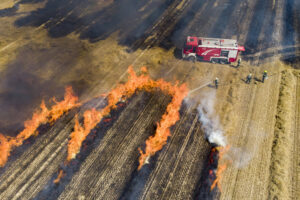Az Őrségre jellemző szeres településszerkezet a térség egyik legszembetűnőbb, legjellegzetesebb vonása, amely jelentős turisztikai vonzerőt is képvisel és épp annyira hozzátartozik az őrségi tájhoz, mint az erdőkkel borított dombvonulatok és a völgyekben meghúzódó üde rétek szövevénye. Ez a táj a természetes élőhelyek összefüggő hálózatát jelenti, amely így képes az Őrségben megtalálható egyedülállóan gazdag élővilág megőrzésére. Eredetileg a határgyepűt őrző családok foglalták el a domboldalakat, dombtetőket. A kezdetben letelepült családok a népesség szaporodása során új házakat, gazdasági épületeket, ólakat építettek,ezzel bővült a lazán elhelyezkedő, kerítések nélküli házcsoport, kialakultak az épületcsoportok, gazdasági udvarok, gyümölcsösök-kertek laza csoportjai, melyet szernek nevezünk. Ez a településszerkezet archaikus – középkori – formákat őrzött meg (akárcsak a gazdálkodás), ill. olyan Kárpát-medencén kívüli hatásokat tükröz, amelyek az ország területének jó részén ismeretlenek.

The dispersed orscattered (locally called „szeres „) settlement structure typical of the Őrség region is one of the most striking and characteristic features which is an important local tourist attraction and belongs to the Őrség landscape just as much as the interwoven texture of the forest-covered hills and the fresh meadows lying in the valleys. This landscape is a continuous network of natural habitats that are capable of sustaining the unique and highly diversifíed flora and fauna found in the Őrség region. lnitially, the hill sides and hill tops were occupied by families guarding the borderland. Later on, with the growing of these initially settled families, new houses, farm buildings, pigsties and pens were built and thus the loosely scattered group of houses with no fences around the buildings had become larger, leading to the formation of loose groups or clusters of smaller groups of buildings, farming yards, orchards and gardens that are altogether called „szer” and the settlements consisting of such loosely scattered homesteads are locally called „szeres” settlements. This settlement structure (and also the way of farming) has retained archaic and medieval forms and reflects influences stemming from places outside the Carpathian-basin that are unknown in most parts of the country.









